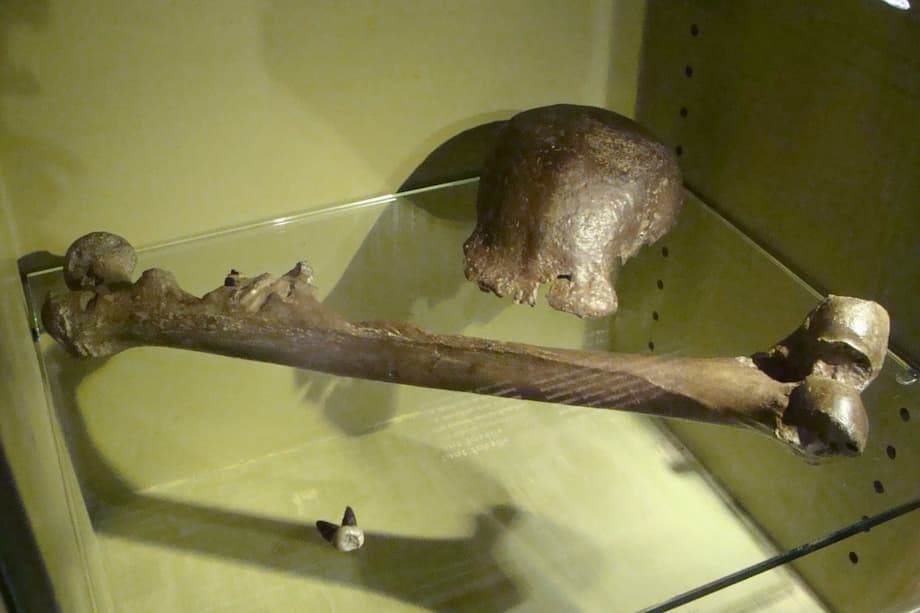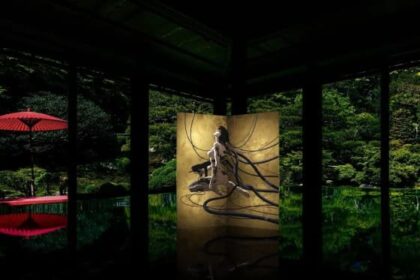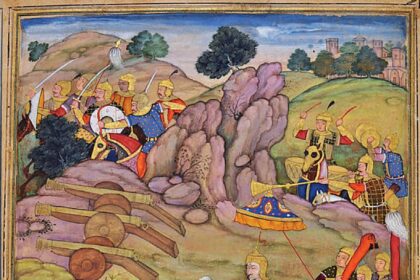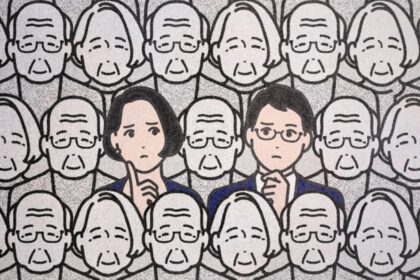A Homecoming for the First Known Homo erectus
The Netherlands has agreed to return a landmark trove of fossils to Indonesia, including the remains of Java Man, the first widely accepted fossil evidence of Homo erectus. Dutch and Indonesian officials confirmed that more than 28,000 pieces from the Dubois Collection will be repatriated after an independent committee concluded the fossils were taken in the colonial era against the will of local communities. The collection, housed at the Naturalis Biodiversity Center in Leiden, contains the Java Man skullcap, a molar, and a femur that transformed scientific understanding of early humans.
The decision was sealed in Leiden by Dutch Minister of Education, Culture, and Science Gouke Moes and Indonesia’s Minister of Culture Fadli Zon. Both countries emphasized that the collection will remain accessible for research. The move came as Indonesian President Prabowo Subianto met King Willem-Alexander and Queen Maxima in The Hague, a sign of the diplomatic weight behind the handover. For Indonesia, the return is a moment of cultural dignity. For science, it marks a historic step that unites groundbreaking fossils with their place of origin while preserving global scholarly access.
What is Java Man and why it matters
Homo erectus is a key ancestor in the human story. The species walked upright, used tools, and adapted to a wide range of environments. Most paleoanthropologists place its emergence in Africa roughly two million years ago, with populations spreading across parts of Asia. Fossils and dating work indicate Homo erectus reached Java over 1.5 million years ago and disappeared long before modern humans arrived on the island.
Java Man refers to a set of fossils found in the 1890s at Trinil on the Solo River in Java by Dutch anatomist Eugène Dubois. With the help of convict labor and local knowledge, Dubois unearthed a skullcap and a molar in 1891, then a femur in 1892. The remains provided concrete evidence of an upright walker with a brain larger than great apes but smaller than modern humans. The finds altered scientific debates about where and how early humans lived, placing Asia on the map of deep human prehistory.
A brief timeline of the discovery
- 1887: Eugène Dubois leaves Europe for Southeast Asia to search for early humans.
- 1891: Skullcap and molar are found at Trinil on the island of Java.
- 1892: A femur is recovered, supporting the interpretation of upright walking.
- 1894: Dubois publishes his findings under the name Pithecanthropus erectus, later recognized as Homo erectus.
- Early to mid 20th century: Continued discoveries across Java, including at Sangiran, strengthen the Homo erectus record in Indonesia.
Why it changed science
The Trinil fossils offered a rare combination of traits that helped bridge the gap between earlier primates and modern humans. The skullcap and leg bone supported the idea that bipedal walking preceded the large brain seen in Homo sapiens. The discovery also disrupted Eurocentric narratives by showing that vital chapters of the human story unfolded in Southeast Asia.
How the fossils left Indonesia
The Dubois Collection was assembled during the Dutch colonial period when scientific expeditions leaned on power structures that privileged European scholars. Local people were often compelled to reveal fossil sites and to participate in excavations. An independent Dutch committee later found that the fossils carried spiritual and economic value for those communities and concluded that the collection had been removed against the will of local people. The use of convict labor to do heavy work at Trinil underscores how colonial systems shaped what became one of the most famous finds in human origins research.
After the initial discoveries, the fossils were transported to the Netherlands, where they remained a focus of research and public display. Their relocation sparked decades of debate after Indonesian independence. Indonesian thinkers pressed for the return of the fossils as sources of national pride and scientific identity, while Dutch officials for years defended continued custody on the grounds of scientific stewardship. The debate mirrored a larger tension between universal claims of science and the rights of nations where discoveries were made.
From Trinil to Leiden
The Java Man remains became part of the Naturalis Biodiversity Center’s holdings, along with thousands of other fossils from across Java and Sumatra. Conservators and scientists in Leiden curated and studied the material for more than a century, and in recent years collaboration with Indonesian researchers grew. The latest decision recognizes Indonesia’s ownership while keeping pathways open for joint research and lending.
The decision to return and how it will work
The Dutch Colonial Collections Committee advised that the state never owned the Dubois Collection in a lawful sense and recommended an unconditional return. The committee described the circumstances of removal as an injustice. The Dutch government accepted the advice, making this the sixth time it has repatriated items under the committee’s framework.
Ministers Gouke Moes and Fadli Zon formalized the agreement at Naturalis in Leiden. Officials said a joint team will manage the transfer. The plan includes a full inventory check, specialized packing and transport, conservation assessments, and agreed standards for storage and climate control. Training and capacity building for Indonesian researchers and collection managers are part of the roadmap, along with ambitions for public exhibitions and educational programs once the collection is home.
Both governments stressed that the collection will remain a resource for science. That means continued collaboration between Naturalis and Indonesian institutions, shared access to catalog data, and research projects that include scientists from both countries. Indonesian authorities said the return affirms the legal ownership of the Republic of Indonesia and restores the central role of Trinil in the story of human origins.
What the Dubois Collection contains
The Dubois Collection is extensive. It spans human ancestors and an array of Pleistocene fauna from Java and Sumatra. At its heart are the Java Man pieces that made Trinil a global reference point for human evolution.
- A skullcap, molar, and femur attributed to Homo erectus from Trinil on the Solo River.
- Tens of thousands of fossils of vertebrates and other specimens that help rebuild ancient environments.
- Catalogued material that has underpinned generations of paleoanthropology and geology research.
Indonesia and the Netherlands have indicated they will keep the scientific value intact through joint projects, visiting researcher programs, and potential loans for display and study.
Diplomacy and symbolism
The agreement coincided with a high level meeting in The Hague, where President Prabowo Subianto met King Willem-Alexander and Queen Maxima. The timing reinforced the political trust that both countries want to project. It also placed the fossil handover within a broader effort to reset ties marked by a complex colonial history.
Indonesian officials cast the return as a restoration of dignity and sovereignty over knowledge created from Indonesian soil at Trinil. They argue that the country’s museums, universities, and local communities should be able to present and study the finds that shaped global understanding of early humans.
Dutch authorities framed the decision as responsible restitution. The government signaled that independent review, thorough research, and cooperation with source countries are now guiding principles for colonial era collections. The committee process has become a reference point inside the Netherlands for decisions on repatriation.
What will Indonesians gain from the return
Repatriation opens a new stage for research in Indonesia. The National Research and Innovation Agency (BRIN) and partner universities can integrate the Dubois Collection into ongoing studies of Java’s human and animal fossil record. Scientists will be able to examine details that are often missed in brief research trips abroad. Long term projects can bloom, from geology and taphonomy to ancient environments and the technologies used by early humans.
Museums in Indonesia will gain a major draw for public education. The collection can anchor exhibitions that connect Java Man with other prominent finds across the island, including discoveries from Sangiran and Ngandong. Visitors will see how fossils and landscapes join to form a timeline that spans hundreds of thousands of years. If the artifacts are displayed in rotation across several institutions, more Indonesians will encounter a chapter of prehistory that has long been central to textbooks but far from home.
Local communities near fossil areas stand to benefit from new attention, provided management is careful and respectful. Investment in conservation facilities and training can create skilled jobs. Educational outreach can deepen appreciation for the safeguarding of fossil sites, which face pressures from development and informal collecting.
A wider shift on colonial collections
The return of Java Man is part of a larger reassessment of what should happen to objects removed during colonial rule. In recent years, several European governments and museums have begun to send items back to countries of origin, including human remains and sacred objects. The trend is expanding from art and regalia to scientific specimens and archives.
- France returned skulls of Indigenous warriors to Madagascar after legal changes that address human remains.
- Germany and France have moved to return royal and religious objects taken from the Kingdom of Benin.
- Belgium returned a gold capped tooth belonging to Patrice Lumumba, a symbol of Congo’s independence struggle.
- Canada has supported returns sought by Indigenous communities, including the repatriation of Beothuk remains from Scotland in 2019 and a memorial totem pole to the Nisga’a Nation in 2023, while many museum returns still proceed case by case.
Indonesia’s requests to the Netherlands have spanned years. Among earlier returns was a royal dagger associated with Prince Diponegoro. The Dubois Collection has long been a priority and now sits at the center of an approach that treats natural history with the same scrutiny already familiar in art restitution. Scholarly work has highlighted how natural history museums were bound up with colonial expeditions and knowledge systems, and that history is now guiding policy.
This handover sends a signal that fossils are not exempt from ethical considerations. The same standards that apply to bronzes, statues, and sacred items can be applied to bones and stones. The guiding aim is not to restrict research but to align it with consent, context, and collaboration.
Challenges and next steps
Repatriating more than 28,000 catalog entries is a substantial undertaking. Teams will verify labels, cross check documentation, and photograph items before packing. Transport plans require specialized materials and climate monitoring to prevent micro cracking or contamination. Chain of custody procedures will track each specimen from Leiden to its new home in Indonesia.
Once the fossils arrive, Indonesian institutions will manage storage conditions to international standards. That includes climate control, pest prevention, and secure access systems. Training for curators and conservators will expand. Indonesian and Dutch specialists are expected to keep working together on conservation plans, advanced imaging, and shared databases.
Research access is central. Scientists will continue to study the Dubois Collection through joint projects, visiting fellowships, and loans that allow short term display in different venues. Public exhibitions can present the story of discovery and return alongside the science, helping visitors understand why these fossils matter for both Indonesia and the world.
Key Points
- The Netherlands will return the Dubois Collection to Indonesia, including the Java Man skullcap, molar, and femur.
- More than 28,000 fossils and specimens will be repatriated from the Naturalis Biodiversity Center in Leiden.
- An independent committee found the fossils were removed against the will of local people and advised unconditional return.
- Ministers Gouke Moes and Fadli Zon formalized the agreement, with a joint team to manage inventory, transport, and conservation.
- Both countries say research access will continue through collaboration, loans, and shared data.
- The move aligns with broader returns of colonial era items by European institutions, including human remains and sacred objects.
- Indonesia sees the return as a restoration of dignity and as recognition of the scientific heritage born in Trinil.












